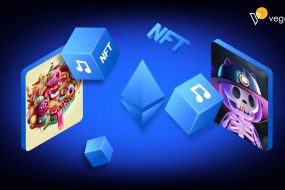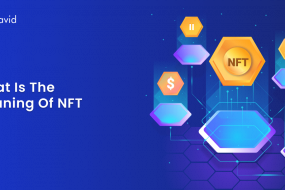
Digital tokens and cryptocurrencies are revolutionizing how assets are represented, owned, and traded. There are broadly three main types of crypto assets: securities tokens, utility tokens, and non-fungible tokens (NFTs). Though all of these use blockchain technology, they differ significantly in their purpose, function, and value drivers. Securities tokens act like traditional securities to provide investors ownership in companies. Utility tokens allow access to services while NFTs verify ownership of digital collectibles.
Each type promises to transform industries through disintermediation, tokenization of value, and empowerment of individuals. However, there are important legal and regulatory differences between them. In this article, we will provide an overview of securities tokens, utility tokens, and NFTs, their key use cases, and applications. We will also compare and contrast the key distinctions between these types of crypto assets in terms of their purpose, value proposition, legal status, and implications for investors, consumers, and businesses.
What are Securities Tokens?
Securities tokens are a type of cryptocurrency that represents traditional securities like stocks, bonds, and derivative contracts. By issuing securities tokens on a blockchain, companies can more easily raise funds through initial coin offerings. Securities tokens give token holders ownership rights similar to traditional securities. Whoever owns the token owns a part of the company and has a claim on the company’s assets and future earnings.
Securities tokens may provide voting rights, equity dividends, interest payments, and capital gains from token price appreciation. Issuing securities tokens allows companies to sell fractions of ownership to many smaller investors. Traditional securities issuance has high minimum investment amounts and costs which restrict participation. The tokens are designed so that they comply with securities and financial regulations. Securities regulators treat securities tokens like traditional securities which means token holders receive the legal protections that come with regulated securities.
What are Utility Tokens?
Utility tokens allow access to a company’s products or services on its platform. They act as coupons or vouchers that can be redeemed within the platform’s ecosystem. Companies issue utility tokens to fund their development of a product or service which the tokens will eventually be used on. The token holders can then use the tokens to access or unlock features of the platform or service once it launches. The value of a utility token comes from the functionality it provides within its native platform. Utility tokens do not give token holders ownership in the issuing company, voting rights, or a claim on profits like securities tokens.
They simply provide a right to use or access a certain product or service on the issuing company’s platform. Utility tokens aim to incentivize the growth of the network by attracting early adopters. As the network expands and becomes more valuable, the utility tokens become more valuable. Utility tokens are generally not classified as securities by regulators since they do not represent an investment contract or ownership in the company.
What are NFTs?
NFTs stand for non-fungible tokens. They are unique crypto assets that represent ownership of digitally created items like images, videos, music, and more. NFTs are stored and traded using blockchain technology. Each NFT has a unique digital signature that distinguishes it from other NFTs. This makes NFTs irreplaceable and not mutually interchangeable like traditional cryptocurrencies. NFTs give creators and artists a way to verify the authenticity and ownership of their digital work.
Although a digital asset can be endlessly reproduced, NFTs make it possible to track and prove who owns the original file and its copyright. NFT buyers are purchasing bragging rights and the status of owning the authentic original version of a work. NFTs have become popular for buying and selling digital collectibles, event tickets, and virtual real estate. The value of NFTs comes from their collectability and utility within online communities.
Use Cases and Applications for Securities Tokens, Utility Tokens, and NFTs
Securities tokens are used as digital representations of traditional securities like stocks, bonds, and derivatives. They allow companies to raise funds through initial coin offerings and give investors fractional ownership of the company. Utility tokens act as digital coupons or vouchers that can be redeemed for access to a company’s products and services on its platform. They incentivize network growth and value accretion.
NFTs can represent digital collectibles like art, music, event tickets, and collectibles. They prove ownership and allow the trading of digital items. NFTs can also represent proof of ownership of real-world assets like real estate or luxury goods.
The digitization of these assets through tokens and NFTs enables the frictionless transfer of ownership and value, wider market accessibility, more liquidity, and broader participation beyond traditional markets. Tokens and NFTs allow for 24/7 trading, fractional ownership, programmable dividends, and royalties, and provide a secure record of provenance and asset ownership on the blockchain.
Comparison between Securities Tokens, Utility Tokens, and NFTs
Market Dynamics and Trends
The markets for tokens and NFTs are still rapidly evolving. Trading mainly occurs on cryptocurrency exchanges and through peer-to-peer transactions. Liquidity can be limited for many tokens and NFTs. However, interest from investors, businesses, and consumers continues to grow. More traditional financial institutions are also starting to get involved through ventures and partnerships. The number of token and NFT projects continues to increase each year. There are also efforts to build supporting infrastructure around standards, regulations, and best practices. The future remains unclear but the potential for disruption and value creation is massive.
Regulatory Considerations
Regulators around the world are still sorting out how to deal with tokens and NFTs. Much depends on whether an asset is deemed a security, utility token, or property. In the U.S., the SEC generally views tokens that provide ownership or investment returns as securities and subject to securities laws. Utility tokens are often not seen as securities. NFTs are still a gray area with no clear classification yet. Many other countries are also developing crypto regulations and guidelines. Overall, there is a push for proper disclosures, transparency requirements, and investor protections without stifling innovation. But legal clarity remains limited, creating risks for projects and participants.
Security and Risks
As with any new technology, there are security and operational risks involved with tokens and NFTs. Projects must properly secure their blockchain networks, token contracts, and marketplaces to prevent hacks and fraud. Token and NFT buyers face risks of losing value due to vulnerabilities, rug pulls, scams, and market volatility. There have been several high-profile hacks and thefts from crypto exchanges, wallets, and projects. Many tokens and NFTs have also become worthless due to failed projects or a lack of genuine use cases. Investors and users need to perform proper due diligence, understand risks, and only invest amounts they can afford to lose. Over time, as the industry matures, security and risk management practices are likely to improve.
Liquidity and Trading
Liquidity and efficient trading remain key issues for many tokens and NFTs. While some tokens and NFTs see substantial trading volumes, many others struggle with low liquidity and sparse trading. This can make it difficult to convert tokens to fiat currency or find buyers for NFTs. Exchanges often only list the most popular tokens and NFTs, leaving others with no major listing. However, as the market grows and infrastructure improves, we are likely to see more liquidity and tighter spreads for crypto assets. New decentralized exchanges and liquidity pooling protocols also aim to improve readability. But for now, token and NFT holders need to be aware that liquidity cannot be guaranteed, especially for niche or new projects.
Interoperability and Standards
Interoperability and standards remain a challenge for the crypto asset space. Different blockchains and tokens are often siloed with little ability to move assets between them. This limits the functionality of tokens and NFTs, as well as their access to different applications and marketplaces. There have been some initiatives to develop standards for how tokens are built and managed. But wider adoption of standards has been slow.
This lack of interoperability means projects must often build custom integrations with different marketplaces and infrastructures. Cross-chain bridges that enable token transfers between blockchains are helping but come with their risks. Ultimately, for tokens and NFTs to reach their full potential, greater interoperability and standards will be needed across the ecosystem. However, progress on this front has only begun and much work remains.
Environmental Impact
The environmental impact of crypto assets like tokens and NFTs has become a major concern. The large amount of energy used to power blockchains and secure networks has come under scrutiny. Proof-of-work blockchains like Bitcoin and Ethereum consume substantial amounts of electricity due to the energy-intensive mining process. While moves are being made towards more sustainable blockchains, the overall environmental footprint of the crypto asset industry remains sizable.
Projects are increasingly looking at their carbon footprints and pledging to offset emissions. However, critics argue that offsets do not eliminate the underlying problem of high energy consumption. As the industry grows, improving sustainability and reducing environmental impacts will be important for the wider adoption of tokens, NFTs, and crypto in general. While technological solutions can help, changes in infrastructure and user behavior will also be needed.
Investor Considerations
Investors in tokens and NFTs should practice due diligence and proper risk management. They should invest spare funds and be prepared to lose their whole investment. Diversification across different assets is important given the volatility. Investors should understand the legal and tax implications of investing in crypto assets. They need to protect themselves from fraud and secure their digital wallets. Only investments an investor is comfortable with and understands are typically good investments.
Conclusion
Securities tokens, utility tokens, and NFTs each represent unique crypto assets with different purposes and functions. Securities tokens signify ownership and investment rights in companies, utility tokens provide access to services and products on a platform, and NFTs verify ownership of digital collectibles, art, and assets.
Securities tokens are regulated as securities by financial regulators, utility tokens are generally unregulated, and NFTs fall into a legal gray area for now. While all three types of crypto assets are stored and traded using blockchain technology, their purpose, value drivers and legal status differ significantly. Nonetheless, the tokenization of various digital and real-world assets through crypto represents the next wave of innovation in digitizing value and enabling new models of wealth creation, investment, and commerce.











